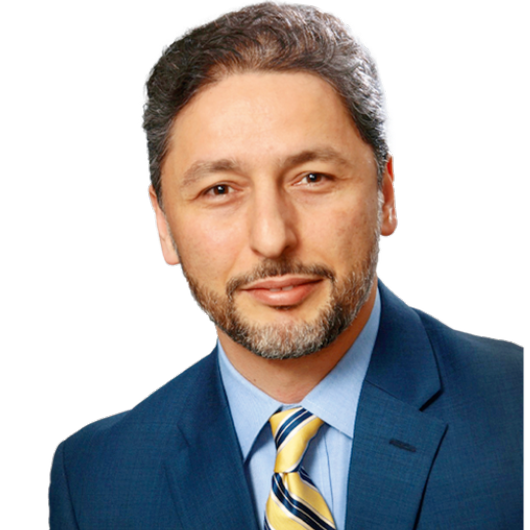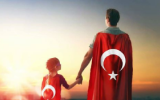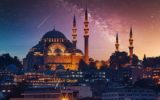
- 21.04.2025, Monday
- 00:53
Catastrophe, Fortitude and Superhuman Effort
10:2619/02/2023, Sunday
Next article
Kadir Üstün
Kadir Üstün has been a frequent contributor to Yeni Şafak for years, penning columns on a variety of topics for the daily

It is not possible to describe the extent of the disaster in the earthquake zone. What we saw during our two-day visit to the region with the organization of the Times of Türkiye showed the vast scope of destruction, and how our people did their best with an incredible effort and preserved their indestructible fortitude. We have seen that everyone, from people waiting to receive the bodies of their relatives, to search and rescue personnel racing against time, from volunteers delivering soup to
It is not possible to describe the extent of the disaster in the earthquake zone. What we saw during our two-day visit to the region with the organization of the Times of Türkiye showed the vast scope of destruction, and how our people did their best with an incredible effort and preserved their indestructible fortitude. We have seen that everyone, from people waiting to receive the bodies of their relatives, to search and rescue personnel racing against time, from volunteers delivering soup to administrators running day and night for coordination, transform their great pain into constructive energy. We see that this disaster, which tests the endurance of our people to an indescribable extent, once again reveals the character of our people who never give up.
Unfortunately, during our visit to the region, we witnessed a disaster and destruction far beyond what the screens and social media can reflect. However, it should be noted that the destruction is not the same in all parts of the city. It is obvious that sometimes the ground, sometimes the quality of the building, and sometimes both are problematic in collapsed buildings. The fact that there are surviving buildings among many destroyed buildings shows that even if the building is made solid, it will not be enough when the choice of the ground is wrong. The fact that many buildings built on solid ground and complying with earthquake regulations remain standing shows that it is possible to combat earthquakes by building earthquake-resistant structures. The fact that the majority of Türkiye is on or near earthquake fault lines reveals that the building stock should be created by applying both the correct ground and compliance with earthquake regulations in the coming period.
It is necessary to talk about the struggle of both the state and civil society as well as the destruction scenes we encountered during our visits to Nurdağı, Kahramanmaraş, and Hatay. The multiplier effect created by thousands of aftershocks, along with two major earthquakes that took place nine hours apart, created an apocalyptic reality where the streets disappeared and people had difficulty finding their way. State institutions, non-governmental organizations, municipalities and volunteers are constantly struggling against the destruction that is seen in great wars or in Hollywood movies. These people do not leave the region by staying in their cars and tents for days and work on many issues from food distribution to fuel aid, provided that they stay awake for days. The fact that none of them focused only on what needed to be done without complaining showed that they had no time for helplessness and despair.
When you talk to people who have lost their loved ones or who are still waiting with the hope that their loved ones will survive (or rather, when you try to speak and the words get stuck in your throat), it is not possible for the fortitude of these people to not feel deeply enveloping. The courage of these people to face their own pain in the face of such a great disaster, their awareness of other people's pain and their efforts to appease them, and the fact that they were worried about a seat and a treat while talking to people like us, revealed the strong character of our people. Of course, it is not possible not to feel helpless and not to rebel against the destruction and loss, but it must be said that the people of the region have turned these feelings into a very intense energy of help and solidarity. It will take a long time to relieve people's pain and heal their wounds, and perhaps it will not be possible, but we can be sure that they will not give up despite all circumstances.
In times of national tragedy like this, emotions at their peak are expected to make cool and rational discussion impossible, but we need to respect the superhuman efforts of people across the country who are trying to contribute in some way. Inspired by their fortitude and strong character, we need to insist on implementing much more permanent urbanization plans in the coming period. It is actually the easiest task to target certain institutions and individuals at such moments, but it should not be forgotten that this problem is caused by the mistakes that have accumulated for decades, turning into an avalanche of mistakes. It was perhaps one of the most striking experiences for me when the people we spoke to told us that this is a collective problem rather than seeing a single responsible person while facing the truth in pain.
Although we may feel intimidated and helpless from time to time in the face of the historical challenge posed by this disaster in the coming years, we should not forget that we have no other choice but to be in social solidarity. Türkiye needs to develop long-term policies in many areas such as creating livable common living spaces, raising environmental awareness, crisis management, and humanitarian aid in the face of huge problems such as long-standing migration and unplanned urbanization. I think that what the people of the region have taught us through the historical struggle of both state strikers and civil society members, who do not leave them alone these days, is to never give up and to resolutely attempt to rebuild.
#Türkiye
#Quake
#Rebuild
#Fortitude
Comments
Hello, the comments you share on our site are a valuable resource for other users. Please respect other users and different opinions. Do not use rude, offensive, derogatory, or discriminatory language.
No comments yet
The floor is all yours.

Click here to receive the most important news of the day by email. Subscribe here.
By subscribing, you agree to receive electronic communications from Albayrak Media Group websites and accept the Terms of Use and Privacy Policy.
LEGAL NOTICE
The BIST name and logo are protected under the "Protected Trademark Certificate" and cannot be used, quoted, or altered without permission.All rights to the information disclosed under the BIST name are entirely owned by BIST and cannot be republished. Market data is provided by iDealdata Financial Technologies Inc. BIST stock data is delayed by 15 minutes.






